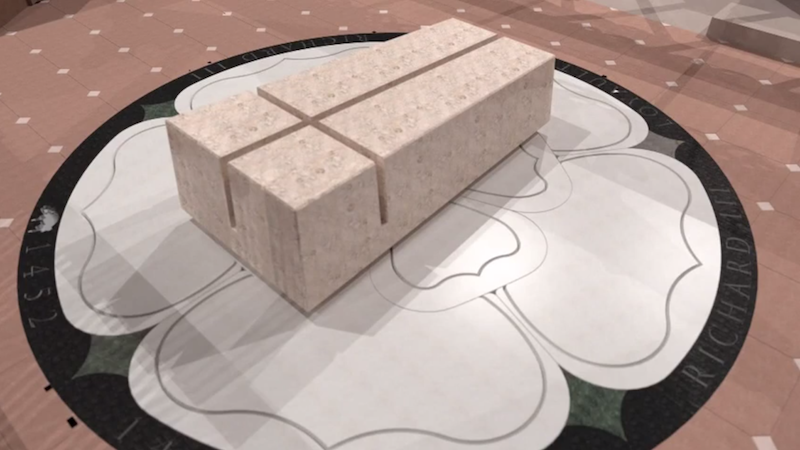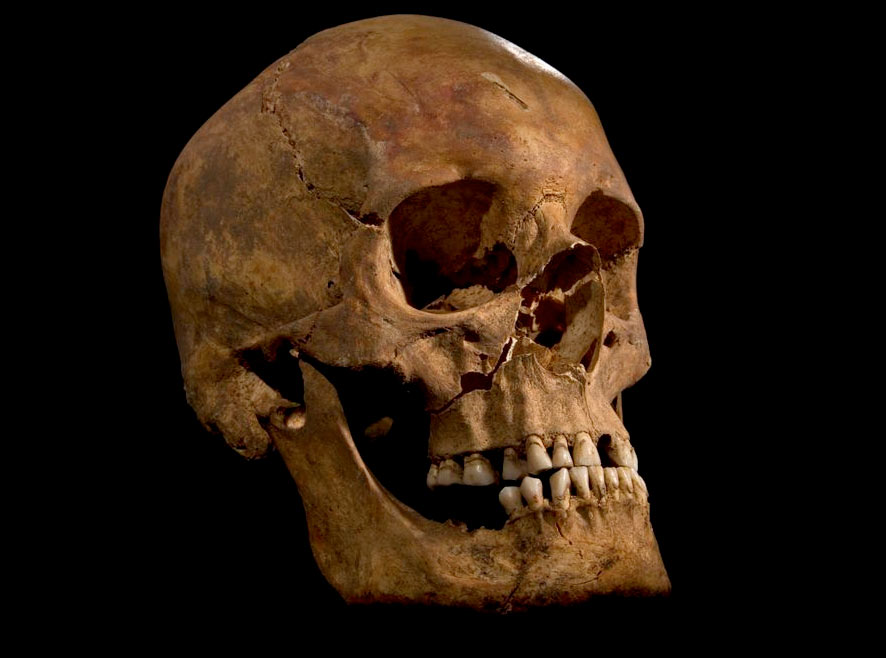Richard III Tomb Design Sparks Controversy

Of course England's most controversial king couldn't be reburied without a fight.
The rediscovered bones of Richard III are set to be reinterred at Leicester Cathedral in England next year. But, displeased with the church's newly unveiled tomb design, some members of the Richard III Society are reportedly pulling their funds from the medieval king's reburial.
Philippa Langley, the Richard III Society secretary who helped push archaeologists to search for the king's bones, told the BBC that unhappy members of the group have asked for their money back. [Gallery: In Search of the Grave of Richard III]
"They think it is a very difficult design," Langley was quoted as saying this week. "The feeling is that it is too modern and stylized, and designed with a cathedral in mind — not a medieval warrior king. I pretty much agree with them."
Richard III, the last king of the House of York, ruled England from 1483 until 1485. He was killed by the rival forces of Henry Tudor at the Battle of Bosworth Field, the definitive fight that ended the War of Roses.

The slain king was given a hasty burial at Grey Friars monastery in Leicester, which was later demolished and lost to history. An archaeological dig last year, led by the University of Leicester, uncovered the ruins of the monastery and the king's battle-scarred skeleton.
Now the Leicester Cathedral is seeking approval for its £1.3 million ($2 million) proposal to rebury Richard in a more regal fashion. Their grave design includes a raised limestone coffin with a deeply carved cross, placed over a carving of a large white rose, the heraldic symbol of the House of York.
Sign up for the Live Science daily newsletter now
Get the world’s most fascinating discoveries delivered straight to your inbox.
According to the BBC, the Richard III Society had pledged about £40,000 ($64,536) to the reburial. The chair of the group, Phil Stone, called the design "utterly inspired" when it was unveiled last week.
"The designs for the reinterment of King Richard III which have been submitted to the Cathedrals Fabric Commission for England are the result of intensive discussion with many parties, including the Richard III Society, and take a wide range of factors into consideration," Peter Hobson, acting canon missioner for Leicester Cathedral told LiveScience in an email.
"We are aware of funds collected by the Richard III Society to contribute towards the costs of a tomb but whether and how these are offered to the Cathedral is entirely a matter for them to decide," Hobson added. "No money has either been promised or expected at this stage and it would be quite wrong for us to have arrived at our designs influenced by the offer of financial contributions from any particular direction."
The Cathedrals Fabric Commission for England will decide whether to approve the proposal by the end of October and is accepting public comment on the design until Oct. 10.
Meanwhile, there is still a legal battle lingering over whether Richard should even be buried in Leicester at all. A group called the Plantagenet Alliance, whose members claim to be distant relatives of the dead king, says Richard would have wanted to be buried in York, a city where the monarch spent about a third of his life. The group has challenged the University of Leicester's exhumation certificate, basing their argument on alleged human rights violations. They were granted a judicial review.
An online petition to the British government asking for Richard III to be buried in York Minster garnered more than 31,000 signatures before it closed this week, according to the Telegraph.
Follow Megan Gannon on Twitter and Google+. Follow us @livescience, Facebook & Google+. Original article on Live Science.










